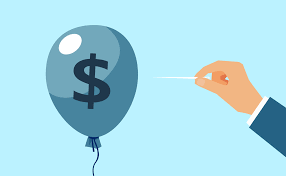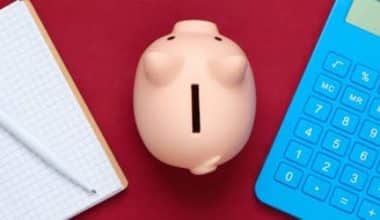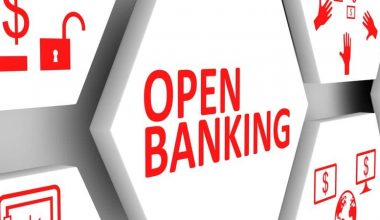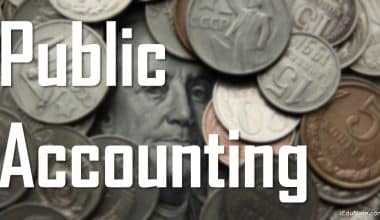The phrase “balloon” implies that the final payment will be substantial. Because the homeowner is unable to reach a high balloon charge at the end of the mortgage, balloon payments are more similar to commercial financing than to consumer financing. We will be discussing how to get rid of a balloon payment and its refinance, even for a mortgage.
Balloon Payment
A balloon payment is a one-time payment that is larger than usual at the end of the loan term. If you have a balloon fee on your mortgage, your payments may be lower in the years leading up to the due date, but you may owe a large sum at the conclusion of the loan.
Balloon loans, on the other hand, typically have shorter durations than standard installment loans, with the large payment due after a few months or years. Balloon fee structures are most typically utilized for commercial loans; although they can also be seen on auto and mortgage loans.
Because of the big payments due at the end, balloon loans are riskier than typical installment loans, despite their lower starting payments. As a result, most lenders will only make these loans to people and enterprises that have good credit; enough cash on hand, and steady income sources.
The Benefits and Drawbacks of Loans With a Balloon Payment
Balloon loans are complicated financial products that should only be used by borrowers with a steady income. This form of loan, for example, would be a suitable solution for an investor looking to reduce short-term loan expenses and free up funds.
Taking out a balloon loan with the expectation of future income growth is dangerous for the average borrower. Making a monthly budget and taking out a loan that you can pay off with your existing income is a better option if you’re planning to buy a house or a car. If you’re not in a rush to buy, you can save for a larger down payment, which will allow you to buy a more expensive asset with a lower monthly payment.
Pros:
- Initial payments are low or non-existent.
- This allows borrowers to obtain low-cost, short-term financing.
- can assist in filling funding gaps.
- There will be fewer requirements for paperwork. A balloon mortgage may not require a home appraisal or other documentation typical of traditional financing, depending on the loan terms and the lender.
- Investment treatment centers can be financed. Buyers that take up fix-and-flip loans (which include balloon payments) will be able to finish the construction project while making minimum monthly payments. However, as a borrower, you must exercise caution when using these loans. They are frequently accompanied by exorbitant interest rates and surcharges.
- You may be able to purchase a home sooner. Buyers who anticipate a big rise in income or a lump-sum amount in the future can use a balloon mortgage to buy a home sooner rather than waiting for the cash.
Cons:
- Long-term loan costs can be greater, especially if the loan is interest-only.
- Due to the payment schedule, it has a higher risk than regular loans.
- There is no guarantee that you will be approved for a refinance to change your debt commitment.
- You could have a more difficult time passing. Balloon mortgage lenders may request a good credit score or a large down payment.
- You might need to take out a second loan. If you can’t pay the balloon fee when it’s time, you may have to take out a second loan to cover it.
- You’ll be able to develop equity more slowly. The monthly mortgage payments before the final balloon payment don’t pay off much principal in the case of interest-only loans, and none at all with balloon income amortization. As a result, balloon fee loans typically generate little to no home equity and might be difficult to refinance.
- It’s possible that you’ll lose your home. A balloon mortgage is dangerous unless you’re certain you’ll be able to repay the debt. Your lender may seize your house if you fail to make the balloon expense.
What Is the Purpose of Balloon Loans?
Balloon loans might come in handy in a variety of circumstances.
#1. Financing for Businesses
Balloon loans can be used to finance the purchase or expansion of a business. Cash is in short supply, especially for young firms, and the company has no credit history (which is why it’s critical to establish credit for your company). When purchasing a business, the seller or lenders may offer a balloon loan with minimal payments, allowing the new business owner to demonstrate that they will make payments on time.
#2. Purchase of a House
Balloon loans can be beneficial when purchasing a home. Monthly payment is computed for a 30-year amortizing mortgage in some situations, but a balloon payment is payable after five or seven years (with only a small portion of the loan balance paid off). Borrowers in other circumstances pay simple interest until the balloon fee is due. These methods make monthly payments more manageable, but they’re also hazardous. You’ll owe a lot of money one day, and if you can’t pay it back, you’ll lose your home and damage your credit.
#3. Loans for Construction and Land
A balloon loan can be used for temporary financing while building a home in a similar way. Lenders may offer loans with a balloon price in two to five years to motivate you to keep working on your project, but the monthly payments are calculated as if you had a 30-year mortgage. This allows you to purchase land, construct your home, then refinance with more standard permanent financing.
#4. Automobile Loans
Auto loans with balloon payments are also available, allowing consumers to get a low monthly payment. However, balloon loans on autos are particularly dangerous because automobiles are depreciating commodities that lose value over time. You’ll be left with an automobile that’s worth substantially less than when you bought it after five years, and you’ll have to repay the majority of the money you borrowed.
You can try to sell the car, but you’re unlikely to acquire enough money to pay off the debt. As a result, you may have to write a check when selling a car on which you owe money. Alternatively, you might refinance and extend the debt for a few more years, putting you in a negative equity situation. If you follow that strategy, you’ll almost certainly owe more than the automobile is worth.
When the Balloon Payment is Due, What Happens?
If your balloon charge is due to be paid, you have just two options for repaying it: take out a new mortgage in the amount of the balloon charge, or sell your house and use the proceeds to repay it.
If you get a new mortgage, you’ll have to apply for and qualify for one that’s at least as big as your balloon payment. The mortgage you acquire may come with points and closing expenses, and your new amortization plan will most likely be over 30 years, so you’ll be starting over.
Payments for Extinguishing Balloons
A borrower has a few options for avoiding the looming balloon payment. In addition to paying off the balloon payment and erasing the debt, a borrower can:
#1. Refinance Your Debt.
A lender might be ready to negotiate with a borrower to repurpose the debt into a different loan vehicle or change the terms of the original loan.
#2. The Underlying Asset Should be Sold.
If the balloon price is for the acquisition of an asset, the borrower may be forced to sell the asset to avoid defaulting on the loan.
#3. Pay the Principal in Full Upfront.
A borrower may be able to pay off a portion of their debt early, although it is not necessary. Any payment made in excess of the interest assessment will go toward the principal balance. Make sure there are no prepayment penalties or fees by checking with your lender.
#4. Negotiate a New Deadline.
An extension, like a refinance, modifies the terms of the previous loan. An extension, on the other hand, will not result in a new arrangement; instead, it will just postpone the balloon payment. You’ll very certainly be given the same payment conditions as before, but with different due dates.
Balloon Payment Mortgages
A balloon payment mortgage is a type of mortgage that allows qualifying purchasers to finance or refinance their homes with low monthly payments. The interest-only house loan, which allows homeowners too, by definition, pay down debt for 5 to 10 years and simply make interest payments, is a common form of a balloon mortgage.
High-net-worth homebuyers who can afford to pay down a large amount on a regular amortization plan frequently use interest-only and other balloon payment mortgages. When the low payment period ends, most balloon mortgage borrowers fail to make the balloon payment. It’s more common to refinance into a new mortgage or sell the house to avoid paying the hefty lump sum in cash.
Home loans with a big, one-time payment due at the conclusion of the term are known as balloon mortgages. The final payment completely repays the loan and is frequently much larger than the initial payments.
A mortgage balloon payment starts with a fixed monthly payment for a set length of time and finishes with a one-time lump-sum payment. The one-time payment of mortgages is referred to as a “balloon payment”. This is because it is substantially greater than the initial installments. According to the balloon loan definition, the final payment is at least two times the mortgage’s average monthly payment. Balloon payments are typically in the tens of thousands of dollars.
When the balloon payment was due, most buyers planned to refinance into a new mortgage. However, many homeowners were unable to refinance their homes as housing values plunged during the economic meltdown. Those who were unable to make their balloon purchase will go into default on their mortgage.
What Is a Balloon Mortgage and How Does It Work?
The lender and the loan determine the balloon mortgage’s particular terms. A balloon note usually has fixed payments for a set period of time, accompanied by a balloon payment.
Since there is no full amortization of balloon mortgage payments, they’re generally small in the beginning. Amortization is the process of repaying a loan with installments that reduce the outstanding balance and pay it off over time. In some circumstances, you can only make interest-only payments within the defined time. The first payments, on the other hand, do not cover the complete amount of principal and interest required to pay off the loan by the due date with balloon payment amortization. It’s for this reason that there’s a balloon payment. There is full payment of mortgages when the balloon payment is made at the conclusion of the term.
When Is the Right Time to Pay a Balloon Payment?
The payment on a balloon mortgage loan is usually due on the loan maturity date, which is when the loan is fully paid off. Mortgage payments are required at the end of the five-year period and settle the outstanding mortgage debt in the event of a five-year balloon payment. The actual delivery date of a balloon payment is determined at the start of the balloon mortgage and is based on the loan terms.
Should You Take Out a Balloon Mortgage?
The risks of balloon payment mortgages outweigh the benefits for most people. There are several instances in which a mortgage with a balloon payment may be beneficial.
#1. The Balloon Payment Is Already Within Your Means
Borrowers who have the cash to pay the payment may choose to trade or spend the money; until the balloon, note payment is due in some instances. Getting out of a balloon mortgage is less hazardous in this scenario; because you already have the funds to make the lump-sum payment.
#2. You Anticipate Receiving a Lump Sum Payment Before the Balloon Payment Is Due
If you’re expecting an inheritance, bonus, or other lump sums, a balloon mortgage may make sense if you’ll be able to afford the balloon payment when it comes due.
#3. You’re Anticipating a Raise in Pay
Borrowers who predict a large increase in earnings in the coming years can use a balloon loan to buy a house while their income is still low. A balloon mortgage, for instance, can get you into a home without waiting if you work in a job; where your salary is low in the first few years but will climb dramatically over time.
#4. You Simply Need Money for a Brief Period of Time.
Investors who want to swap a house frequently use balloon mortgages to purchase, remodel, and sell a home quickly.
#5. You Just Intend to Stay in the House for a Short Period of Time
For homeowners who expect to have the property for a brief period and then sell it before the lump sum is due. If the value of your home drops during most of that time, you will need to make up the difference between what you sell it for and what you owe on the loan.
How To Get Rid Of A Balloon Payment
Mazzara, who has assisted customers in transitioning from balloon notes to more secure loans, believes that getting rid of a balloon payment can be difficult. However, there are a few options. Some options for getting rid of balloon payment mortgages are listed below.
1. Refinance the balloon mortgage if it hasn’t been paid off yet. Refinancing the loan to another mortgage before the balloon payment is due is one technique to get rid of a balloon payment. Mazzara tells LendingTree, “We move a lot of individuals out of those types of loans and assist them to navigate through them through refinance.”
2. Ensure that the “balloon payment” is paid in full. Paying the balloon payment will, of course, help you get rid of the balloon note. Accruing the lump sum within the set payment period, utilizing anticipated funds, or borrowing the money to make the balloon payment are all options for making the balloon payment.
3. Buy off your house to get rid of a balloon payment. If a borrower is unable to make the balloon payment by the due date, the property can be sold to avoid defaulting on the debt.
4. Pay extra throughout the first several months to get rid of a balloon payment quickly. Paying more during the introductory phase will reduce the principal owed at the conclusion of the loan term, assuming there is no prepayment penalty.
5. Sign a new deadline. If a homeowner is unable to repay the balloon payment on schedule, an extension may be possible. This alternative, therefore, is likely to come with hefty fees and may only result in a short-term extension. So you see, it is better that you get rid of your balloon payment before it crosses its date
Refinance Balloon Payment
In a balloon payment, you have the option to refinance if you are unable to pay the balance in full at the conclusion of your finance term. To settle the balloon sum, refinancing entails taking out a new loan with the lender. After getting rid of the balloon, you can start making the monthly payment on your new loan.
Because you’re essentially applying for a new loan, refinancing becomes a new loan, and according to the National Credit Act, new credit necessitates a new credit agreement. If you refinance your balloon payment, you have the option of paying it off in 12 to 48 months. If you are unable to pay by then, speak with your lender to see if you may extend your repayment time.
Because to refinance a balloon payment is a fresh loan application, you will need a valid South African identification document (ID) or a valid foreign passport, as well as a few other crucial documents to qualify. Bring your valid driver’s license, three months’ worth of bank statements, proof of address, and your most recent payslip.
If you’re thinking about how to refinance your balloon payment, keep in mind that you’ll need a good credit score. Your interest rate will be determined by your credit profile. This is why it’s critical that you pay all of your bills on time every month. Banks may refuse to give you credit if you have a poor credit score, or your interest rate will be higher as a result of your credit score.
Keep in mind that having car insurance is essential. If you are involved in an accident or your automobile is stolen, you will still be responsible for repaying your lender. Because there are so many incidents on the road, it is critical that you carry insurance. Keep in mind that you won’t be able to refinance your car if it hasn’t been insured. As a result, it’s critical that you obtain a car insurance quote.
Balloon Mortgage Risks
A balloon mortgage entails hazards that aren’t present in other types of mortgages. Your home’s value may drop, your financial condition may worsen, or you may not be able to sell or restructure your mortgage before the balloon payment is due. Make all of your mortgage payments on schedule and maintain a high credit score to lessen the danger of not being able to refinance when your balloon payment is approaching.
The interest rate on your loan could potentially increase during the life of your loan, forcing you to refinance at a higher rate to satisfy the balloon payment. This is a major risk, especially with today’s cheap mortgage rates.
A fixed-rate mortgage is typically your best bet when low-interest rates are available. You can receive an adjustable-rate mortgage that converts to a fixed rate in five to ten years if you are confident that your income will increase significantly during the next few years.
If you have a balloon payment on your mortgage, make a strategy to pay it off. Understand your options and begin the refinancing or selling process as soon as possible.
How to Get Your Balloon Payments Paid in Full.
Many authorized financial providers give customers a balloon payment when they take out automobile financing. Many vehicle purchasers aspire to acquire the car of their dreams but are unable to do so due to financial constraints.
Now, lenders are allowing purchasers to purchase their dream cars for a reduced monthly payment. They must pay off the balance of their car loan when the term expires. When you need to pay a lump sum at the end of your vehicle loan period, this is known as a balloon payment, or residual.
Balloon loans are useful for customers who can’t afford to pay high monthly installments for the cars they want. When applying for a balloon payment, however, you must carefully consider how you will pay it off. Most purchasers are unaware that there is a viable option for settling your balloon refinance, even if the balloon payment is substantial. There are methods for paying your balloon payments that are both efficient and effective.
How Does the Balloon Payment Work?
A balloon mortgage’s particular terms are determined by the lender and the loan. A balloon note usually has fixed payments for a set period of time, accompanied by a balloon payment.
What Is a Disadvantage of a Balloon Payment?
Below are the disadvantages of having a balloon payment:
- Long-term loan costs can be greater, especially if the loan is interest-only.
- Due to the payment schedule, it has a higher risk than regular loans.
- There is no guarantee that you will be approved for a refinance to change your debt commitment.
- You could have a more difficult time passing. Balloon mortgage lenders may request a good credit score or a large down payment.
- You might need to take out a second loan. If you can’t make the balloon payment when it’s time, you may have to take out a second loan to cover it.
How Do I Get Rid of Balloon Payment?
Here is how to get rid of your balloon payment:
- Refinance the balloon mortgage if it hasn’t been paid off yet
- Ensure that the balloon payment” is paid in full.
- Buy off your house.
- Pay extra throughout the first several months.
- Sign a new deadline.
Who Would Benefit from a Balloon Loan?
In exchange for a smaller fixed monthly payment, balloon payments allow borrowers to make a greater payment at the conclusion of the loan’s term. Generally, these loans are suitable for borrowers with solid credit and a steady salary.
What Happens after Balloon Payment?
Sometimes, the balloon payment is referred to as the guaranteed minimum future value (GMFV). It is a projection of the vehicle’s worth at the conclusion of the financing agreement. If you return the vehicle at the conclusion of the agreement and its value has decreased, the lender will incur a financial loss.
Is a Balloon Payment Interest Free?
“When you purchase with a down payment, you save money, but when you purchase with a balloon payment, interest accrues over the term,” he says.
Is It Wise to Buy a Car with a Balloon Payment?
A balloon payment is a lump sum due at the conclusion of the loan term. On a vehicle financing agreement, it could cost you a significant amount of money and harm your long-term fortune.
Related Article
- SECOND MORTGAGE: Definition, Rates and Requirements
- Cash-out refinance loan explained (+ requirements and tools)
- PERSONAL LINE OF CREDIT (PLOC): Definition, Pros, Cons & Best Options
- BEST EMAIL MARKETING FOR SMALL BUSINESS: Top 19 Picks (+ Detailed Guide)
- Mortgage: Simple 2023 Guide for Beginners and all you need Updated!!!
- BILLING STATEMENT: Definition & Template
- EXPENSIVE PURSES: Top 21+ Most Expensive Purse Brands 2023






